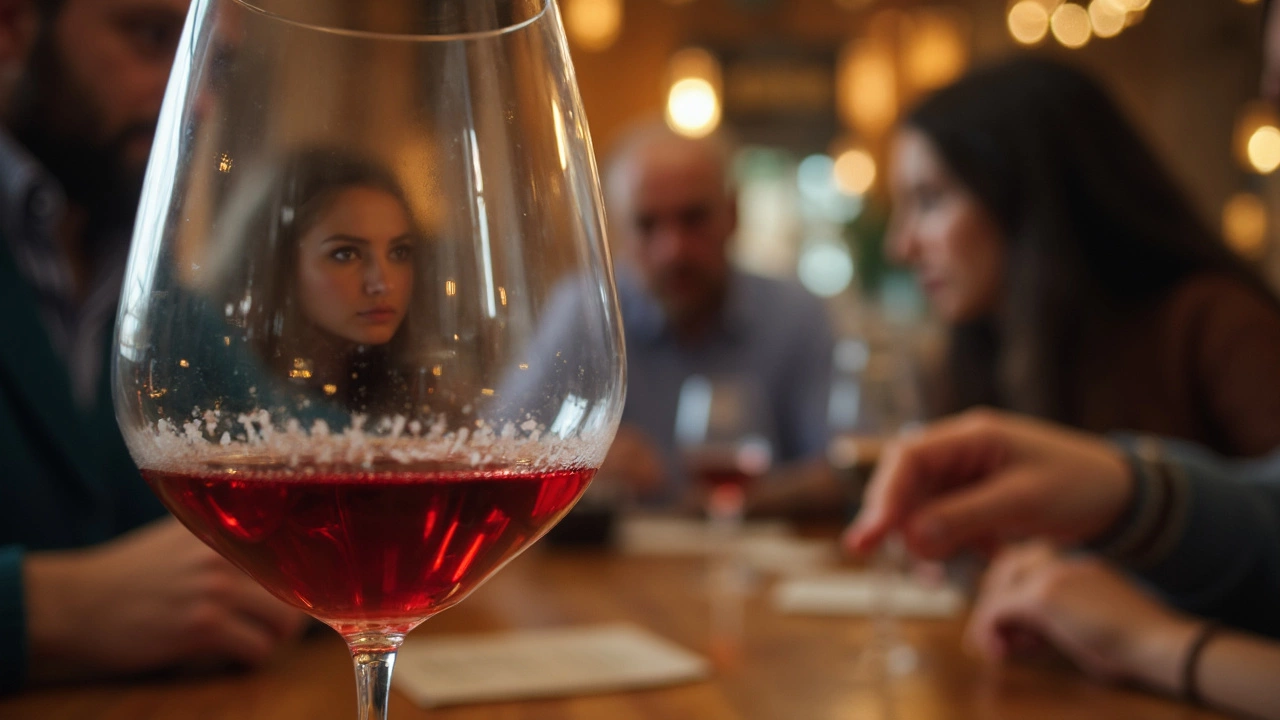Wine Legs Explained: What They Are and Why They Matter
Ever stared at a glass of red and noticed those slow, dripping streaks down the side? Those streaks are called wine legs, and they’re more than just a pretty visual. In simple terms, legs are the trails that form when you swirl the wine and then let it settle. They can tell you a bit about the wine’s alcohol, sugar, and overall texture, but they’re not a magic test. Let’s break down what’s really going on.
Why Do Wine Legs Form?
The science behind legs is actually pretty straightforward. When you swirl a glass, you create a thin film of wine on the inner surface. As the wine evaporates, the liquid gets thinner, and surface tension pulls it back down in beads. Those beads travel down the glass as the legs you see. Two main factors drive this movement: alcohol and glycerin.
Alcohol evaporates faster than water, so a higher‑alcohol wine will leave a thinner film more quickly. The thinner film means stronger surface tension, which creates faster, more pronounced legs. Glycerin, a natural by‑product of fermentation, adds viscosity. The more glycerin, the slower the beads flow, giving you longer, slower‑moving legs. In short, strong, slow legs usually point to a higher alcohol content or a sweeter wine, while faint, quick legs suggest lower alcohol and less sugar.
Reading Wine Legs: Practical Tips
Now that you know why legs show up, how do you use them? First, give the wine a gentle swirl and watch the film settle for about five seconds. Count how many seconds it takes for the legs to run down. A good rule of thumb: if it takes more than 10 seconds, you’re likely looking at a wine with 13%+ alcohol or noticeable residual sugar.
Don’t rely solely on legs, though. A wine can have high alcohol but still feel light if it’s well‑balanced with acidity. Use legs as a quick checkpoint, not the final verdict. Pair this observation with the wine’s aroma, taste, and body for a fuller picture.
Another handy tip: temperature matters. Warm wine shows more legs because alcohol evaporates faster. If you’re tasting a chilled white, the legs will be subtle even if the alcohol is high. Warm the glass a bit (just a few seconds in your hand) and you’ll get a clearer view.
Finally, remember that glass shape influences leg visibility. A narrow, tall glass spreads the film thinner, often exaggerating leg length. A wide, shallow glass does the opposite. If you’re serious about reading legs, stick to a standard wine‑tasting glass.
Bottom line: wine legs are a handy, visual clue that can hint at alcohol and sugar levels. They’re easy to spot, quick to assess, and add a fun, scientific twist to your tasting routine. Next time you pour a glass, take a second to watch the legs and let them guide your next sip.
Ever noticed those streaks running down your wine glass and wondered what they're all about? This article breaks down what wine legs really mean, why they form, and whether they say anything important about quality. Get no-nonsense tips on how to read them, spot myths, and actually use them the next time you're tasting wine. No fluff, just practical info you can use. Perfect for anyone who's stared at their glass and asked, 'So what?'
View Details

